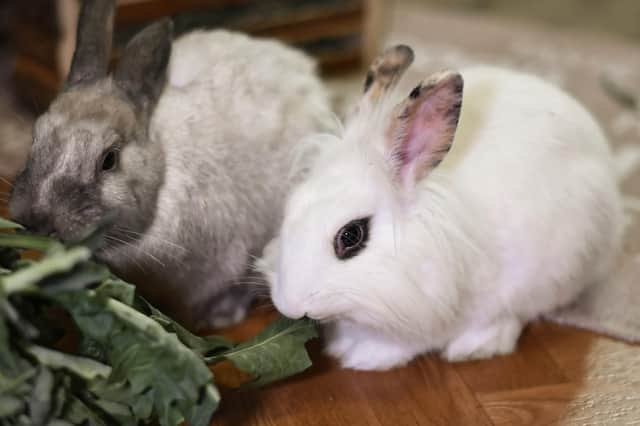FARMING: The right diet makes for a healthy rabbit


Rabbit’s teeth grow continually throughout their lifetime, and so the diet we give them needs to promote lots of chewing to wear their teeth down. If we give them too many things that don’t need lots of chewing (such as pellets), their teeth grow too long which can be painful and ultimately require a general anaesthetic for us to burr their teeth down for them.
We also need to make sure that the food we give them isn’t high in calories.
Advertisement
Hide AdAdvertisement
Hide AdRabbits are grazing animals and are prone to obesity when fed too many high calorie sugary feeds.
For a rabbit to be happy and healthy, we would recommend the following:
At least 85% of their diet should be hay (at least the size of your rabbit in hay per day).
Variety is the spice of life so we would recommend at least two different hays (e.g. meadow hay and timothy hay) to be available at all times.
Advertisement
Hide AdAdvertisement
Hide AdOne handful of fresh leafy greens twice daily (e.g. basil, broccoli, cabbage, parsley, spinach).
One tablespoon of nuggets per day (two tablespoons for rabbits over 3.5kg).
Rabbits are much happier when they have a friend to live with! The best grouping is a neutered male and a neutered female. Rabbits can be neutered from around four months old. Rabbits should not live with guinea pigs as they can pass diseases to each other.
We vaccinate rabbits for two diseases; myxomatosis and rabbit haemorrhagic disease (RHD strain 1 and 2). Rabbits can be vaccinated from five weeks old, and they then need a repeat vaccine every year.
Advertisement
Hide AdAdvertisement
Hide AdMyxomatosis is unfortunately often a fatal disease which can persist in hutches and is carried by fleas, mosquitoes and mites.
Some signs include skin lesions and thickened eyelids. Rabbit haemorrhagic disease is shed in urine, faeces and in the air.
The virus can survive for a long time. Indoor rabbits are also at risk as the virus can be carried on car wheels or on our shoes! Strain 1 often causes sudden death, strain 2 carries more non-specific signs but carries a very guarded prognosis.
Rabbits are commonly presented to our practice for dental disease or gut stasis. Common signs of dental disease include going off food, dribbling, a dirty bottom and weight loss.
Advertisement
Hide AdAdvertisement
Hide AdGut stasis may be due to a blockage in the intestines, a lack of gut movement, or secondary to another condition.
Your rabbit will become lethargic, go off food and a reduce faecal output. Gut stasis is a medical emergency so you should contact us straight away if you have any concerns.